Why Switch To A Raw Diet For Your Cat
12/20/17
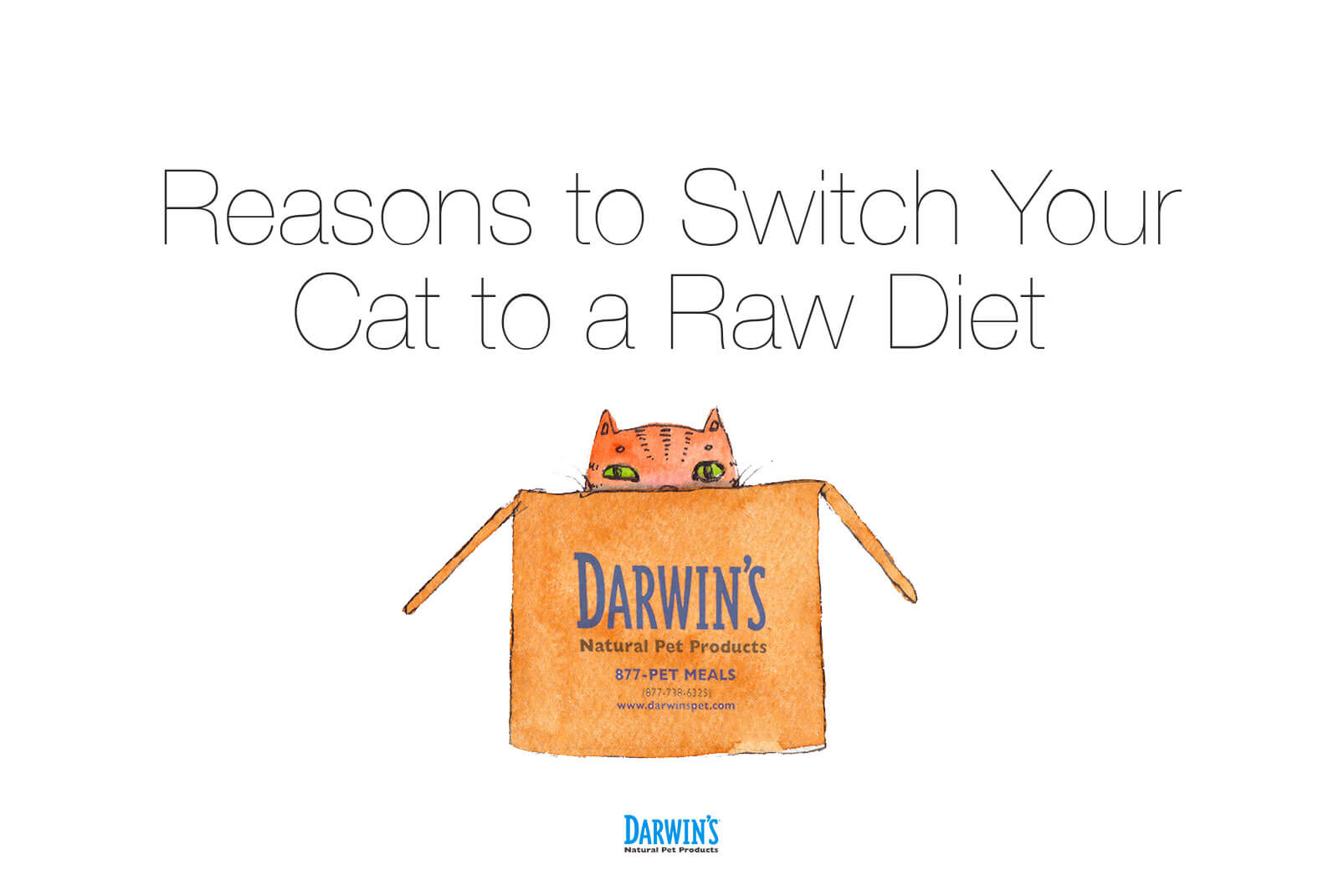
7 Reasons To Switch Your Cat To A Raw Diet
Your cat is an obligate carnivore evolved to use raw meat protein for quick power. A raw diet helps your feline maintain eye health, a balanced immune system, optimal energy, and weight control. Feeding a raw diet to your cat also helps prevent carbohydrate and starch-based diseases like diabetes mellitus, urinary tract infections (UTI), and irritable bowel disease (IBD). Go back to the basics, and meet your cat’s physical and digestive needs with the raw protein for which your cat is metabolically adapted.
1. Feed Your Cat Like the Wildcat It Is
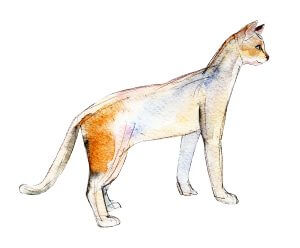 Understanding the nutritional needs of the purring cat draped across your chair back requires a primer in cat evolution. Nearly identical to its Near Eastern and Egyptian ancestor, the species Felis sylvestris lybica (the African wildcat), your cat is a water-efficient hunter, an obligate carnivore reliant on animal tissue to meet its unique nutritional requirements.
Understanding the nutritional needs of the purring cat draped across your chair back requires a primer in cat evolution. Nearly identical to its Near Eastern and Egyptian ancestor, the species Felis sylvestris lybica (the African wildcat), your cat is a water-efficient hunter, an obligate carnivore reliant on animal tissue to meet its unique nutritional requirements.
Cats awaited the agricultural revolution (approximately 12,000 ago) to decide to live among humans had its advantages. Grain stocks drew mice. Humans welcomed cats for their pest-control value, for not only did the rodent population drop, snakes and other venomous crawlies declined as well. Over time, the more human-tolerant wildcats “self-domesticated,” bred, and linked their fortunes to people. Yet over the millennia, cats have changed little in their digestive abilities; they have a limited tolerance for food other than meat.
Cats, in their natural habitat, consume a natural raw diet including rodents, small reptiles, and birds, which have high protein value, moderate fat content, and few carbohydrates. All cats are metabolically adapted to “preferentially use protein and fat as energy sources.” Cats use protein like athletes use carbs, but a diet heavy in carbohydrates decreases a cat’s ability to digest its glucose-producing proteins. Is your cat getting the meat she needs?
2. Keep Your Cat’s Eyes Healthy with Raw Meals
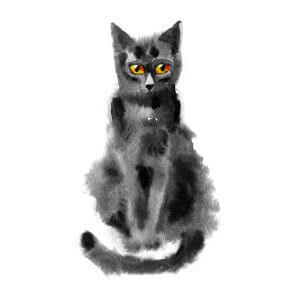 Your cat’s eyes have six to eight times more rod cells than yours and a 200-degree field of peripheral vision. Keeping cat peepers healthy requires taurine, an essential amino acid that maintains eye and heart as well as growth, reproduction, neurological development, hearing, and proper bile function. In the wild, cats get taurine from a raw diet of birds, rodents, and insects.
Your cat’s eyes have six to eight times more rod cells than yours and a 200-degree field of peripheral vision. Keeping cat peepers healthy requires taurine, an essential amino acid that maintains eye and heart as well as growth, reproduction, neurological development, hearing, and proper bile function. In the wild, cats get taurine from a raw diet of birds, rodents, and insects.
If you think your cat gets plenty of taurine from that gourmet canned cat food, think again. Heat destroys a good two-thirds of taurine in canned meat, not to mention other amino acids, enzymes, and nutrients. Cats need raw muscle and organ meats, which are loaded with taurine.
3. Balance Your Cat’s Immune System with a Raw Diet
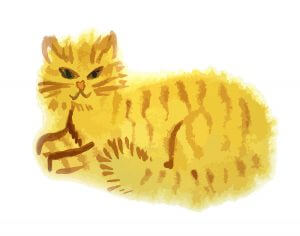 Cats with balanced immune systems can handle occasional fleas, pollens, and ingesting occasional food that doesn’t agree with them. Their bodies respond by producing antibodies. Antibodies are like tiny Y-shaped bouncers that bind to irritants, escorting them out of the body. When a cat’s immune system is compromised, allergy symptoms arise. The antibody bouncers attach themselves to the threatening substances, but they can’t wrestle them out; they circulate in the bloodstream triggering inflammation, itchiness, or worse.
Cats with balanced immune systems can handle occasional fleas, pollens, and ingesting occasional food that doesn’t agree with them. Their bodies respond by producing antibodies. Antibodies are like tiny Y-shaped bouncers that bind to irritants, escorting them out of the body. When a cat’s immune system is compromised, allergy symptoms arise. The antibody bouncers attach themselves to the threatening substances, but they can’t wrestle them out; they circulate in the bloodstream triggering inflammation, itchiness, or worse.
If your cat exhibits an allergic response–scratching, sneezing, wheezing, runny eyes, ear infections, vomiting, snoring, or paw chewing to name a few—see your veterinarian. Discuss a raw diet to rebalance your cat’s immune system. Getting rid of biologically inappropriate foods like corn, soy, and wheat from your cat’s diet your cat removes foods your cat is not equipped to digest. Try for a six-week period a raw protein choice that your cat has not previously eaten.
4. More Energy, Weight Control and Diabetes Prevention
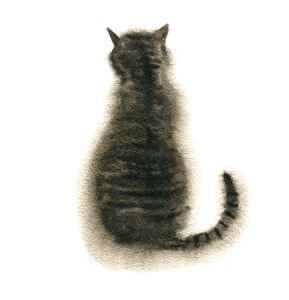 Your cat is hardwired to stalk in shadow hours, burst into full-tilt boogie chases, and then recover with a 16-hour nap. If a cat is lethargic or out of sorts, diet may be the culprit.
Your cat is hardwired to stalk in shadow hours, burst into full-tilt boogie chases, and then recover with a 16-hour nap. If a cat is lethargic or out of sorts, diet may be the culprit.
The Association for Pet Obesity Prevention estimates that 58 percent of cats in the United States are obese. Well-intended Americans love their cats to death. Obese cats suffer from bladder and urinary tract disease, but also often develop diabetes. A fresh meat diet can prevent a lot of misery.
Many cat diseases go undetected and untreated. Diabetes mellitus can cause thirst, increased appetite, and unusual grooming habits. If left untreated, a diabetic cat may lose its appetite, vomit, become dehydrated, or have problems with motor function. Should your cat exhibit any of these symptoms, see a veterinarian, and discuss both medications and changing to a raw diet.
Note: switching to a low-carb diet if your cat receives insulin requires lowering the insulin dosage – otherwise, you will be putting your cat at significant risk for a hypoglycemic crisis. Talk to your vet.
5. Prevent Feline Urinary Tract Infections (UTI) and Irritable Bowel Disease (IBD) by Feeding Raw
Urinary tract disease in cats is one of the most common reasons cats are abandoned to animal shelters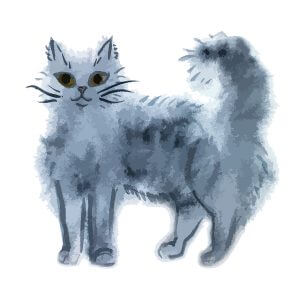 . Sadly, this problem stems from grain-based starchy foods that drive up the pH of a cat’s urine, and that’s when Struvite crystals form in a cat’s concentrated urine.
. Sadly, this problem stems from grain-based starchy foods that drive up the pH of a cat’s urine, and that’s when Struvite crystals form in a cat’s concentrated urine.
Likewise, feline inflammatory bowel disease (IBD) may be caused and can be alleviated by diet. IBD is a group of gastrointestinal disorders that occur when inflammatory cells infiltrate and thicken the gastrointestinal tract, inhibiting the intestine’s proper functioning. One of the identifiable causes is a “food allergy.”
Prevention is key. Feeding cats food that supports a proper intestinal pH is essential for prevention and long-term therapy. Because dietary allergens are a recognized possible factor in IBD, a food trial using a fresh meat diet that the cat has never eaten may be recommended by your veterinarian.
6. YOUR CAT WILL LOVE a Raw Food Diet!
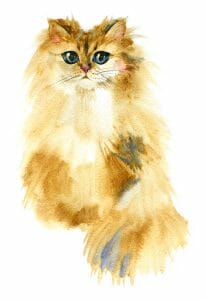 Cats do things on their own schedule. Rediscovering their inner wildcats may take some time. Therefore, if you decide to start your cat on a raw diet after it has been conditioned to fly into the kitchen when kibble hits the bowl, you’ll have to work on a transition plan. Regular feeding times, no grazing, feeding your cat in a flat dish with its food at roughly body temperature, and remaining patient is all in your cat’s best interest. Once these adjustments are made, your cat will love a raw food diet.
Cats do things on their own schedule. Rediscovering their inner wildcats may take some time. Therefore, if you decide to start your cat on a raw diet after it has been conditioned to fly into the kitchen when kibble hits the bowl, you’ll have to work on a transition plan. Regular feeding times, no grazing, feeding your cat in a flat dish with its food at roughly body temperature, and remaining patient is all in your cat’s best interest. Once these adjustments are made, your cat will love a raw food diet.
7. YOU WILL LOVE THE CONVENIENCE of Home Delivery!
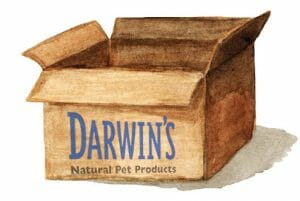 Some raw-meat enthusiasts formulate their own raw food diets with grocer meat. The origins of that meat are sometimes dubious. It’s time-consuming and messy. Darwin’s is free-range, cage-free, and free of steroids, hormones, or chemical preservatives. Your cat’s meals come to you vacuum-sealed and frozen to keep vital nutrients intact. Darwin’s ensures balance and top-quality sourcing. You ensure you feed your wildcat at the time she pleases.
Some raw-meat enthusiasts formulate their own raw food diets with grocer meat. The origins of that meat are sometimes dubious. It’s time-consuming and messy. Darwin’s is free-range, cage-free, and free of steroids, hormones, or chemical preservatives. Your cat’s meals come to you vacuum-sealed and frozen to keep vital nutrients intact. Darwin’s ensures balance and top-quality sourcing. You ensure you feed your wildcat at the time she pleases.
Meet your cat’s physical and digestive needs with a diet it will love. You will love the deliver-to-your-door convenience. Darwin’s Natural Selections™ Raw Cat Food Premium Line and Intelligent Design™ Raw Cat Food, our Prescription Line for cats with special health needs.



